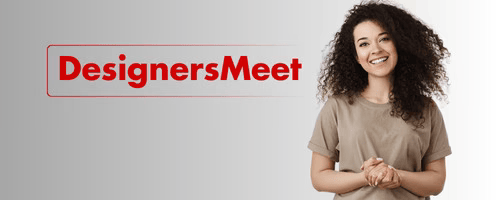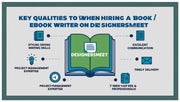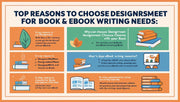Typography is more than just selecting a font—it’s a fundamental part of visual communication that influences how users perceive and interact with a design. Whether you’re working on a website, logo, advertisement, or social media graphic, typography plays a key role in establishing tone, improving readability, and guiding attention. For freelance designers showcasing their skills on platforms like DesignersMeet.com, understanding the impact of typography can elevate their work and set them apart from the competition.
At its core, typography is about organizing text in a way that makes it easy to read and visually appealing. It involves choices like font style, size, line spacing, letter spacing, and alignment. A good typographic design ensures that the content is legible and that users don’t have to strain to read it. This is especially important in digital design, where users often scan rather than read every word. Clear, well-structured typography helps them absorb information quickly and efficiently.
Typography also sets the mood and personality of a brand. A modern sans-serif font might suggest innovation and simplicity, while a decorative script font might evoke elegance or creativity. The choice of font and how it’s used can dramatically affect how a brand is perceived. For example, a tech startup might choose clean, minimal typefaces to convey efficiency and modernity, while a children’s toy brand might lean into playful, rounded fonts to communicate fun and approachability.
In addition to aesthetics, typography contributes to user experience and accessibility. Proper contrast between text and background, appropriate font sizes for different devices, and thoughtful use of headings and subheadings all make content easier to navigate. Designers who keep accessibility in mind—such as using readable fonts and maintaining good contrast—demonstrate a deeper understanding of inclusive design, something that clients increasingly value.
Hierarchy is another powerful function of typography. By varying font weights, sizes, and spacing, designers can create a visual path for the viewer, leading them from headlines to subheadings to body text. This not only improves the flow of information but also highlights key points and calls to action. A strong typographic hierarchy can guide users through a website or advertisement effortlessly, improving engagement and conversions.
For freelance designers on DesignersMeet.com, showcasing thoughtful typographic choices in their portfolios signals professionalism and attention to detail. It also shows that they understand design fundamentals beyond color and imagery. Whether designing a minimalist landing page or a vibrant event poster, great typography enhances every project and helps clients communicate their message clearly and effectively.
In summary, typography is a core design element that shapes both function and feel. When used skillfully, it supports branding, boosts usability, and creates visual harmony. Designers who master typography not only produce more polished and professional work, but also deliver stronger results for their clients—making it a crucial skill for success in today’s competitive design landscape.




